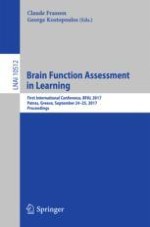2017 | Buch
Brain Function Assessment in Learning
First International Conference, BFAL 2017, Patras, Greece, September 24-25, 2017, Proceedings
herausgegeben von: Claude Frasson, Prof. George Kostopoulos
Verlag: Springer International Publishing
Buchreihe : Lecture Notes in Computer Science
